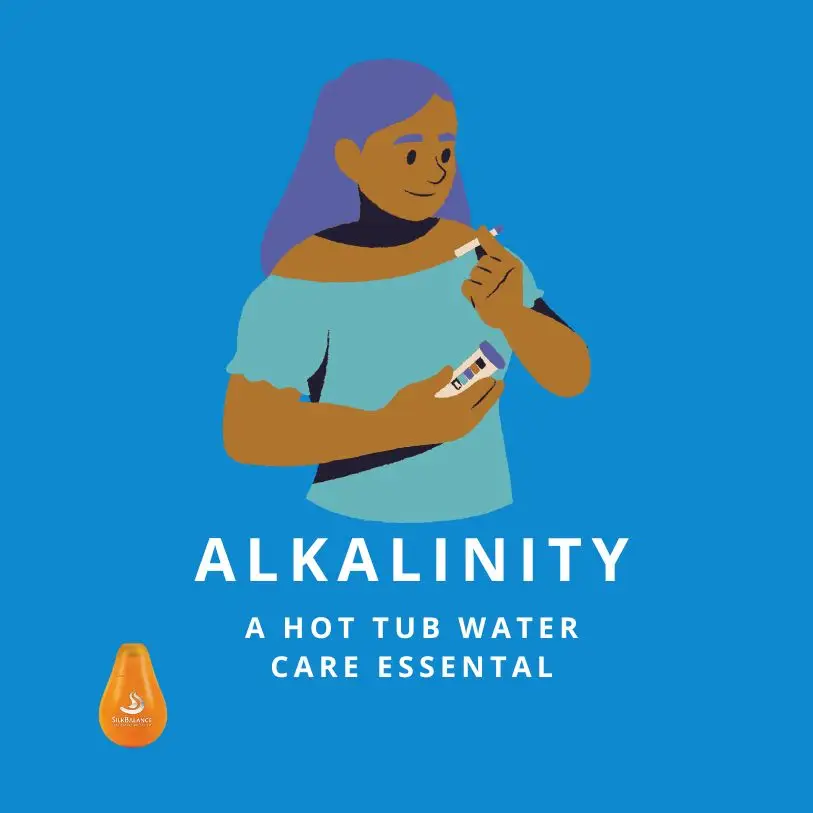When it comes to maintaining a hot tub, the focus often drifts towards sanitizers and pH levels, but alkalinity is a crucial parameter that should never be overlooked. Total alkalinity serves as the backbone for safe, clean, and component-friendly hot tub water, setting the stage for all other water chemistry parameters. I’ll explore why maintaining proper alkalinity is vital and why it should be checked regularly.
The Role of Alkalinity in Water Balance
Alkalinity, specifically total alkalinity, acts as a buffer for pH levels in your hot tub water. It helps stabilize the pH by neutralizing acids in the water, which prevents drastic fluctuations. Such fluctuations can lead to various problems, not only with water clarity and sanitation but also with the integrity of the hot tub components. If the alkalinity is too low, you’ll find that your pH levels can swing wildly with just minor additions of chemicals, making the water corrosive. This can damage hot tub components such as heaters, pumps, and the tub’s surface.
Conversely, high alkalinity can lead to scale formation, which not only clouds the water but also clogs filters and reduces the efficiency of your heater. The right balance of alkalinity ensures that the water remains clear, the components run smoothly, and the overall system operates efficiently.
Checking and Managing Alkalinity
It’s a common misconception that once set, alkalinity does not need regular monitoring or adjustment. This belief can lead to neglect, resulting in water that is either too acidic or too basic, each carrying its own set of problems. Regularly checking the alkalinity—as often as you check pH levels—is essential. The ideal total alkalinity level for a hot tub is typically between 80 and 120 parts per million (ppm). Maintaining this range will prevent most of the common problems associated with poor water balance.
Managing alkalinity typically involves adding an alkalinity increaser if levels are too low, or diluting the hot tub water if levels are too high. It’s important to make adjustments in small increments and retest the water after each change to avoid overshooting your target range.
Integrating SilkBalance into your hot tub maintenance routine can significantly streamline the process, thanks to its unique formula designed to support and maintain alkalinity within the correct ranges. SilkBalance stands apart from other water care products by not only simplifying the balancing of water chemistry but also reducing the need for frequent adjustments. Its specialized composition helps stabilize the pH and alkalinity, which in turn minimizes the maintenance required to keep your hot tub in top condition. This allows you to enjoy more relaxation time in your hot tub, confident in the knowledge that the water is safe, balanced, and gentle on both the skin and the hot tub components. By choosing SilkBalance, you’re opting for a solution that ensures consistent water quality with minimal effort, setting a new standard in hot tub care.
The Importance of Regular Maintenance
Ignoring alkalinity can lead to a domino effect of water balance issues. Without a stable alkalinity level, efforts to manage pH and sanitizer effectiveness can become futile, leading to unsafe water conditions that could endanger users’ health and the lifespan of the hot tub itself. Regular maintenance not only ensures a pleasant and safe soaking experience but also protects your investment by prolonging the life of the hot tub components.
Alkalinity might not be the first parameter that comes to mind when you think of hot tub maintenance, but it is certainly one of the most critical. Dispelling the misconception that it can be set and forgotten is the first step towards better, safer hot tub care. Remember, regular checks and balances are key to enjoying your hot tub without hassle and unexpected repairs.


